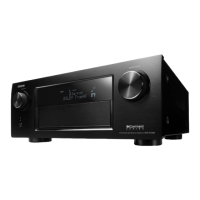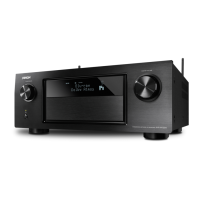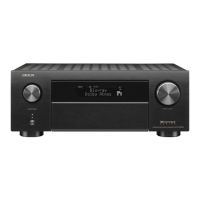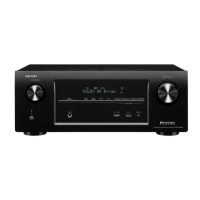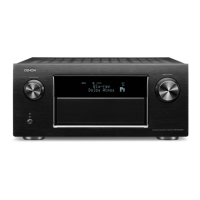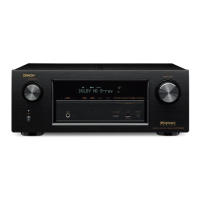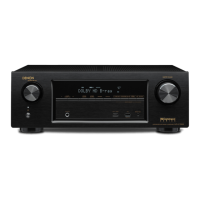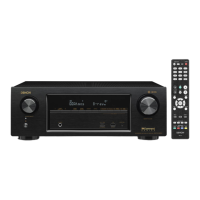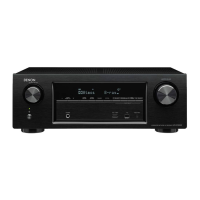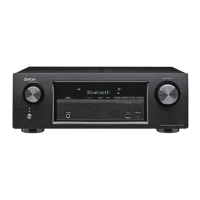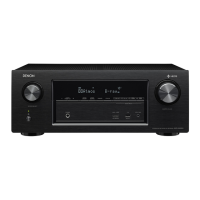186
Appendix
TipsPlaybackConnections
Contents
Front panel Display Rear panel IndexRemote
Settings
2 Set the crossover frequency
40Hz / 60Hz / 80Hz (Default) / 90Hz / 100Hz / 110Hz / 120Hz / 150Hz
/ 200Hz / 250Hz
%
•“Crossovers” can be set when the “Subwoofer Mode” (vpage186)
setting is “LFE+Main”, or when you have a speaker that is set to “Small”.
•The default crossover frequency is “80Hz”, which will work best with the
widest variety of speakers. When using very small speakers, however, you
can choose a higher setting based on the specified frequency response of the
speakers. If the speaker has a specified frequency response of 120 Hz – 20
kHz (as an example), then choose the 120 Hz crossover frequency.
•For speakers set to “Small”, low frequency content below the crossover
frequency is attenuated to the speakers and the low bass content is then
re-delivered to the subwoofer, or the front (L/R) speakers if they have been
set to Large.
•The speakers that can be set when “Individual” is selected dier depending
on to the “Subwoofer Mode” (vpage186) setting.
•When “LFE” is selected, speakers set to “Small” at “Speaker Config.”
(vpage182) can be set. If the speakers are set to “Large”, “Full Band” is
displayed and the setting cannot be made.
•When “LFE+Main” is selected, speakers can be set regardless of the
“Speaker Config.” (vpage182) setting.
Bass
Set subwoofer and LFE signal range playback.
2 Subwoofer Mode
Select low range signals to be reproduced by subwoofer.
LFE (Default) : The low range signal of the channel set to “Small”
speaker size is added to the LFE signal output from the
subwoofer.
LFE+Main : The low range signal of all channels is added to the LFE
signal output from the subwoofer. This is usually the best
setting for most systems.
%
•“Subwoofer Mode” can be set when “Speaker Config.” – “Subwoofer”
(vpage183) is set to other than “No”.
•Play music or a movie source and select the mode oering the strongest
bass.
•If “Front” and “Center” for “Speaker Config.” (vpage182) are set to
“Large”, and “Subwoofer Mode” is set to “LFE”, no sound may be output
from the subwoofers, depending on the input signal or selected sound mode.
Select “LFE+Main” if you want the bass signals to always be produced from
the subwoofer.
2 LPF for LFE
Set LFE signal playback range. Set this when you want to change the
playback frequency (low pass filter point) of the subwoofer.
80Hz / 90Hz / 100Hz / 110Hz / 120Hz (Default) / 150Hz / 200Hz / 250Hz
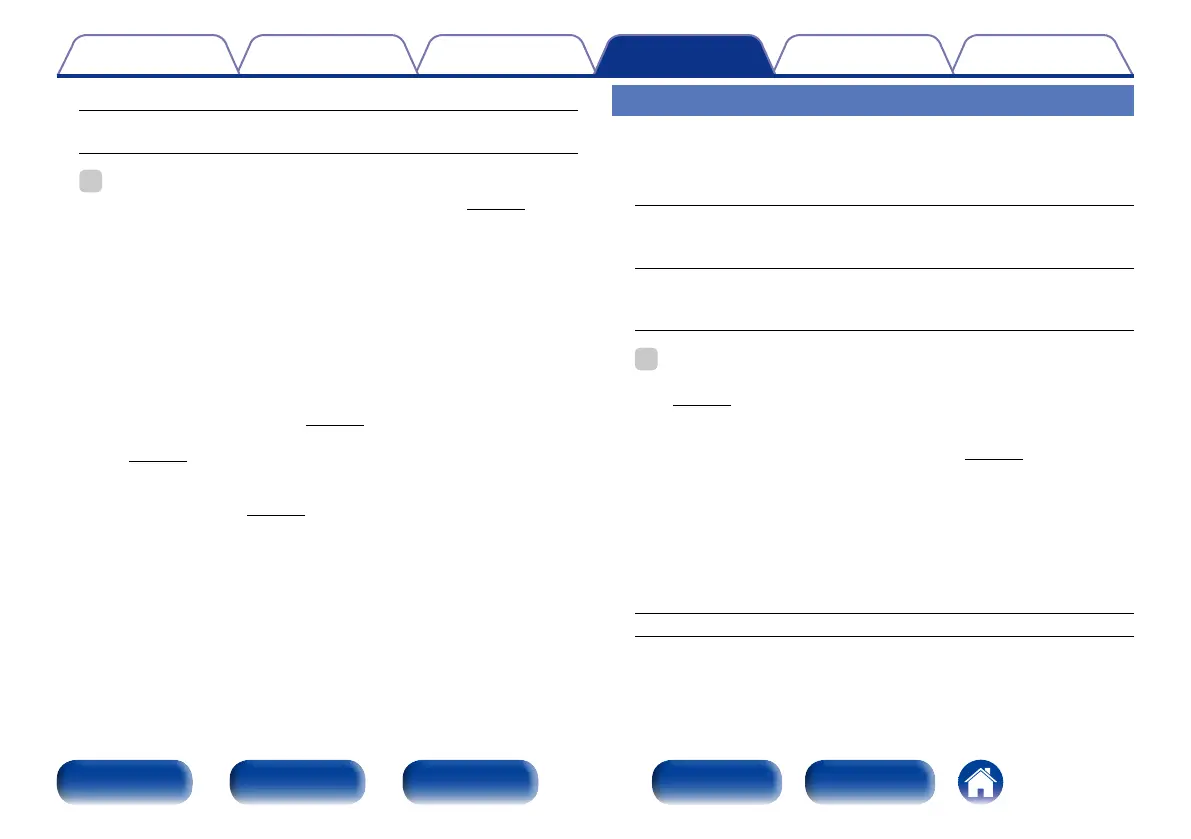